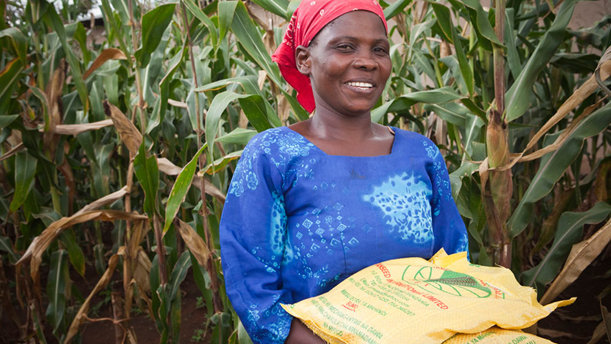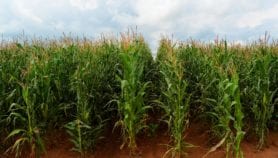By: Gilbert Nakweya
Send to a friend
The details you provide on this page will not be used to send unsolicited email, and will not be sold to a 3rd party. See privacy policy.
[NAIROBI] Africa has made progress in its efforts to provide improved seeds to farmers but the continent still faces numerous challenges that hinder smallholder farmers’ access to seeds, according to a new index.
During the launch of the initiative called The African Seed Access Index (TASAI) in Kenya last month (12 March), researchers from the private sector institutions, government and academic institutions called for urgent development of a competitive seed sector that will ensure smallholder farmers have timely access to high quality seeds at affordable prices.
According to researchers, lack of access to seeds is a major setback to food security on the continent and improvement of smallholder farmers’ livelihoods.
“TASAI aims at encouraging African governments and other development agencies to create a sustainable environment that will increase the development of competitive seed systems for smallholder farmers.”
Edward Mabaya, Cornell University.
“Africa’s agricultural productivity has been lagging behind for decades because smallholder farmers are limited with timely and affordable access to improved seed varieties of staple food crops such as maize, sorghum and cowpea,” says Edward Mabaya, a development practitioner and TASAI’s principal investigator from US-based Cornell University.
The tool, which gives an annual record on the vibrancy of national seed sectors, is a collaborative initiative by US-based Cornell International Institute for Food, Agriculture and Development and Market Matters Inc, a development organisation.
According to a statement from TASAI, a pilot assessment conducted with the index showed uneven access to seeds. For example, whereas it takes an average of 12 months for new seed varieties to reach farmers in South Africa, the duration for Zimbabwe is almost two years and for Kenya and Uganda it is three years.
Mabaya adds that the African seed sector is complex and investments directed at existing opportunities to develop sustainable seed production capacity in Africa are usually constrained by a poor understanding of the needs of each country.
“TASAI aims to fill that gap by systematically monitoring 16 indicators that are essential to the development of a national seed sector,” Mabaya explained. “These indicators will be broadly classified under research and development, industry competitiveness, service to smallholder farmers, seed policy and regulations, and institutional support.”
Njeri Gakonyo, an agricultural economist from Kenya-headquartered Alliance for a Green Revolution in Africa (AGRA), lauded the initiative for capturing access to improved seed varieties, which she believes will help strengthen agricultural production in Africa.
George Bigirwa, associate director of AGRA’s Program for Africa’s Seed System, believes the tool will be crucial in supporting research systems to develop high-yielding, drought- and disease-tolerant seed varieties.
“Weak regulatory agencies in some countries and delays in new varieties release has led to distribution of fake seeds to poor farmers,” Bigirwa said, urging governments and the private sector to collaborate to save smallholder farmers on the continent.
But Mainza Mugoya, policy officer at the Eastern Africa Farmers’ Federation, says that researchers should consider selling seeds through farmers’ associations.
Mugoya adds that there’s need to address accessibility of all major crops, including neglected ones such as pasture seeds and potatoes that have seed accessibility in Kenya below five per cent.
This article has been produced by SciDev.Net's Sub-Saharan Africa desk.














